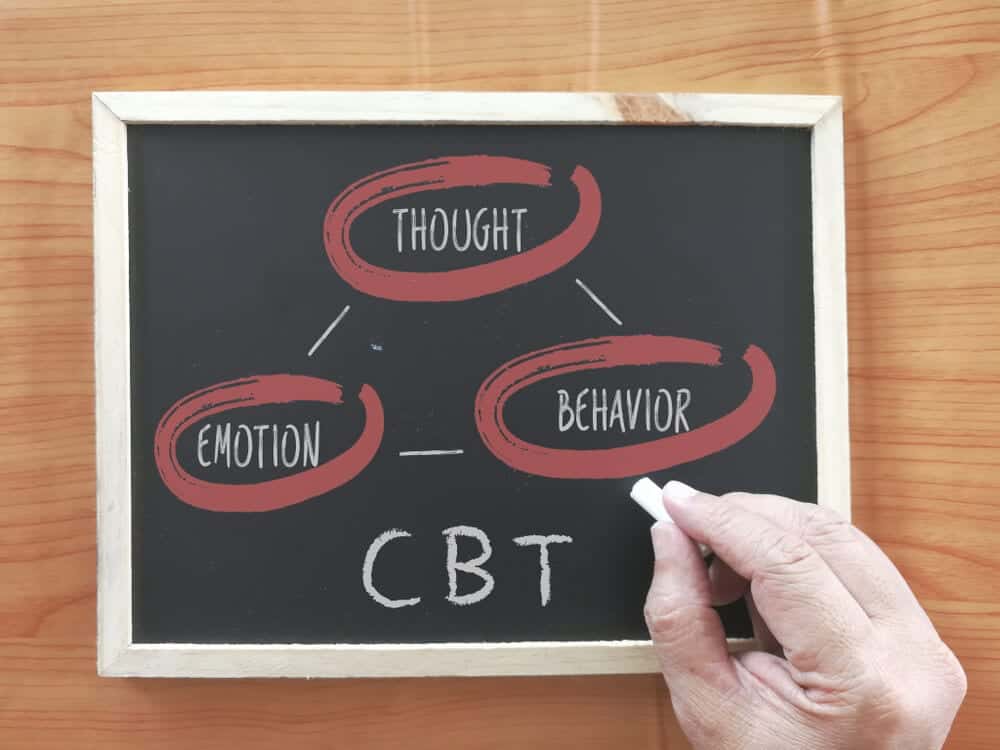
If you’ve ever been in a situation where panic is expected, you have a glimpse of what it is to have teen panic disorder. You become anxious, your adrenaline starts pumping, your fight, freeze, or flee response is ready to go. When a kid has teen panic disorder, these symptoms manifest whenever anxiety and stress push the teen beyond his or her limits.
With teen panic disorder, panic can occur “out of the blue”, when the teen is not in any danger. These episodes are called panic attacks. Because there is no danger, these panic attacks aren’t useful; in fact, they can cause significant problems. If a teen experiences many panic attacks, he or she often begins to worry about having another panic attack, and the anticipation causes him or her to feel even more anxiety.
Even though scientists don’t yet completely understand what causes teen panic disorder, we do know that genes play a large role because it’s very common for the immediate family members of someone with panic disorder to also have panic disorder. Research also suggests that experiencing stressful or traumatic events (death in the family, accidents, or abuse) might be part of the development of teen panic disorder.
It is encouraging that teen panic disorder is a common and treatable disorder. Teens with panic disorder have unexpected and repeated periods of intense fear or discomfort. They can experience a racing heartbeat or feel short of breath. These panic attacks last from minutes to hours. The insidious part of teen panic disorder is that the panic attacks frequently develop without warning, so it is critical that parents are on the lookout for signs and symptoms.
Symptoms
If you know an anxious teen, be on the lookout for symptoms of teen panic disorder:
- Intense fearfulness or sense that something terrible is happening
- Racing or pounding heartbeat
- Dizziness or lightheadedness
- Shortness of breath
- Trembling or shaking
- Sense of unreality
- Fear of dying, losing control, or losing your mind
Each of these symptoms is a manifestation of the anxiety and fear raging in your teen’s mind. As a panic attack forms, the body releases adrenaline and other hormones in response to stress and anxiety. These hormones are what cause the physical symptoms like an accelerated heartbeat, sweating, shaking, and shortness of breath.
But these are just the outward, physical symptoms. What people cannot see are the debilitating mental symptoms, like a sense of impending doom, fear of dying, or losing one’s sense of reality. These symptoms are far more damaging to your teen than the physical symptoms that will pass as the adrenaline leaves the body. It is nearly impossible to understand the mental symptoms without a description from someone who suffers from teen panic disorder:
Losing One’s Sense of Reality – from Healthline
It was like the world was made of wax. The first time I felt it, I was walking down the streets of New York City. I’d been anxious for months, having panic attacks upon waking, while teaching, while in the back of a cab.
I’d stopped taking the subway and was walking to work when suddenly the buildings around me started to shimmer like their atoms didn’t hold together. They were too bright, immaterial, and shaking like flip-book cartoons. I didn’t feel real either.
My hand looked garish and it panicked me to clearly feel the thought, move your hand, echo cavernously inside my head — and then see my hand move. The whole process that was supposed to be automatic, instant, and unnoticeable was broken down.
It was as if I were an outside observer of my innermost processes, making me a stranger in my own body and mind. I feared I’d lose my grip on reality, which already felt tenuous and shaky because of a severe flare-up of lifelong anxiety and panic. I felt reality melt away a week later when I was having one of the biggest panic attacks of my life.
I was on my couch, my hands frozen into claws, the EMTs poised with an oxygen mask and EpiPen above me. I felt as though I were in a dream and everything was hyper-real — colors too bright, people too close, and huge clown-like people.
My skull felt too tight and my hair hurt. I could feel myself seeing out of my own eyes and hear myself talk too loudly inside my brain. Aside from being deeply uncomfortable and distracting, what made it even scarier was that I had no idea what it was. I thought it was an indication of total insanity, which caused me more anxiety and panic. It was a devastating cycle.
These frighteningly real descriptions give us only a taste of what these symptoms are like for teens who suffer from teen panic disorder. This is one of the reasons why getting a diagnosis as quickly as possible is essential.
Diagnosis
Teen panic disorder can be difficult to diagnose. It can result in many visits to physicians and multiple medical tests that can be expensive and possibly painful. When properly evaluated and diagnosed, teen panic disorder usually responds well to treatment.
Teens with symptoms of panic attacks should first be evaluated by the family physician or pediatrician. To help pinpoint a diagnosis, the doctor will do a complete physical exam, order blood tests to check thyroid levels and other possible conditions, and order heart tests, such as an electrocardiogram (ECG or EKG).
If no other physical illness or condition is found as a cause for the symptoms, a comprehensive evaluation by a child and adolescent psychiatrist is the next step toward diagnosis. A psychological evaluation includes talking about your teen’s symptoms, fears or concerns, stressful situations, relationship problems, situations he or she may be avoiding, and family history. Some psychiatrists will have the teen fill out a psychological self-assessment or questionnaire and ask about alcohol or other substance use.
For an official diagnosis of teen panic disorder, the following criteria, presented by the American Psychiatric Association and the Diagnostic and Statistical Manual of Mental Disorders must be met:
- Your teen has frequent, unexpected panic attacks.
- At least one attack has been followed by one month or more of ongoing worry about having another attack; continued fear of the consequences of an attack, such as losing control, having a heart attack or “going crazy”; or significant changes in behavior, such as avoiding situations that your teen thinks may trigger a panic attack.
- The panic attacks aren’t caused by drugs or other substance use, a medical condition, or another mental health condition, such as a social phobia or obsessive-compulsive disorder.
The good news is that once you have a diagnosis for your teen, you can begin discussing treatment options with your medical providers.
Treatment
If not recognized and treated, teen panic disorder and its complications can be devastating. Panic attacks can interfere with a teen’s relationships, schoolwork, and normal development. Attacks can lead to severe anxiety and can also affect other parts of a teen’s mood or functioning. Teens with panic disorder may begin to feel anxious most of the time, even when they are not having panic attacks. Some begin to avoid situations where they fear a panic attack may occur or situations where help may not be available.
Several types of treatment are effective:
Medication – Several types of medication have been shown to be effective in managing symptoms of panic attacks:
- Selective serotonin reuptake inhibitors (SSRIs). Generally safe with a low risk of serious side effects, SSRI antidepressants are typically recommended as the first choice of medications to treat panic attacks. SSRIs approved by the Food and Drug Administration (FDA) for the treatment of panic disorder include fluoxetine (Prozac), paroxetine (Paxil, Pexeva) and sertraline (Zoloft).
- Serotonin and norepinephrine reuptake inhibitors (SNRIs). These medications are another class of antidepressants. The SNRI venlafaxine (Effexor XR) is FDA approved for the treatment of a panic disorder.
- Benzodiazepines. These sedatives are central nervous system depressants. Benzodiazepines approved by the FDA for the treatment of panic disorder include alprazolam (Xanax) and clonazepam (Klonopin). Benzodiazepines are generally used only on a short-term basis because they can be habit-forming, causing mental or physical dependence.
Psychotherapy – helps the child and family learn ways to reduce stress or conflict that could otherwise cause a panic attack. During psychotherapy, teens learn about their condition and moods, feelings, thoughts and behaviors. Psychotherapy helps teens learn how to take control of their lives and respond with effective coping mechanisms.
Cognitive Behavioral Therapy – with techniques taught in cognitive behavioral therapy, your teen may learn new ways to control anxiety or panic attacks when they occur. The therapist will encourage your teen to talk about thoughts and feelings and what’s troubling him or her. A therapist can help your teen gain more confidence and an increased comfort level.
CBT focuses on specific problems and uses a goal-oriented approach. During the therapy process, the therapist may ask your teen to do homework — activities, reading or practices that build on what is learned during regular therapy sessions — and encourage your teen to apply what he or she is learning in daily life.

The typical course of treatment with CBT includes these steps:
Identify troubling situations or conditions in your life
These may include such issues as a medical condition, bullying, grief, anger or symptoms of a mental health disorder. The therapist and your teen may spend some time deciding what problems and goals you want to focus on.
Become aware of your thoughts, emotions, and beliefs about these problems
Once your teen has identified the problems to work on, the therapist will encourage him or her to share thoughts about them. This may include observing self-talk, your teen’s interpretation of the meaning of a given situation, and your teen’s beliefs about him or herself, other people, and events.
Identify negative or inaccurate thinking
This will help your teen recognize patterns of thinking and behavior that may be contributing to your teen’s anxiety. The therapist may ask your teen to pay attention to his or her physical, emotional, and behavioral responses in different situations.
Reshape negative or inaccurate thinking
The therapist will likely encourage your teen to examine whether his or her view of a situation is based on fact or on an inaccurate perception of what’s going on. This step can be difficult. Your teen may have long-standing ways of thinking about life and him or herself.
With practice, helpful thinking and behavior patterns will become a habit and won’t take as much effort.
Combination Treatment – many teens with panic disorder respond well to the combination of medication and psychotherapy. With treatment, the panic attacks can usually be stopped. Early treatment can prevent the complications of panic disorder such as agoraphobia, depression and substance abuse.
A few weeks after your teen begins treatment, you will have follow-up appointments with his or her doctors. You and the doctor should discuss how well the prescribed medications are working or might work to improve your symptoms as time passes; benefits and side effects your teen is experiencing; any risk for serious side effects based on your teen’s medical history; the cost of each medication; alternative therapies, medications, vitamins, and supplements that could affect your teen’s treatment.
No matter how you choose to treat your teen with teen panic disorder, always be caring, patient, and compassionate. Use all the resources available in your area to make certain your teen is properly diagnosed and treated before the condition worsens or brings on other disorders.
Conclusion
Teen panic disorder is a horrifying disorder to live with. The constant worry and stress make it difficult for a teen to operate and function well within the parameters of daily life. It takes the right combination of medication and/or therapy to help your teen find ways to cope with teen panic disorder and live as normal a life as possible.
If you believe that your teen is dealing with reactive attachment disorder and needs help managing their disorder and understanding how to keep it from negatively impacting their lives and relationships, you have options! Reach out to Beachside Teen Treatment Center in order to see how our facility can help your family!




